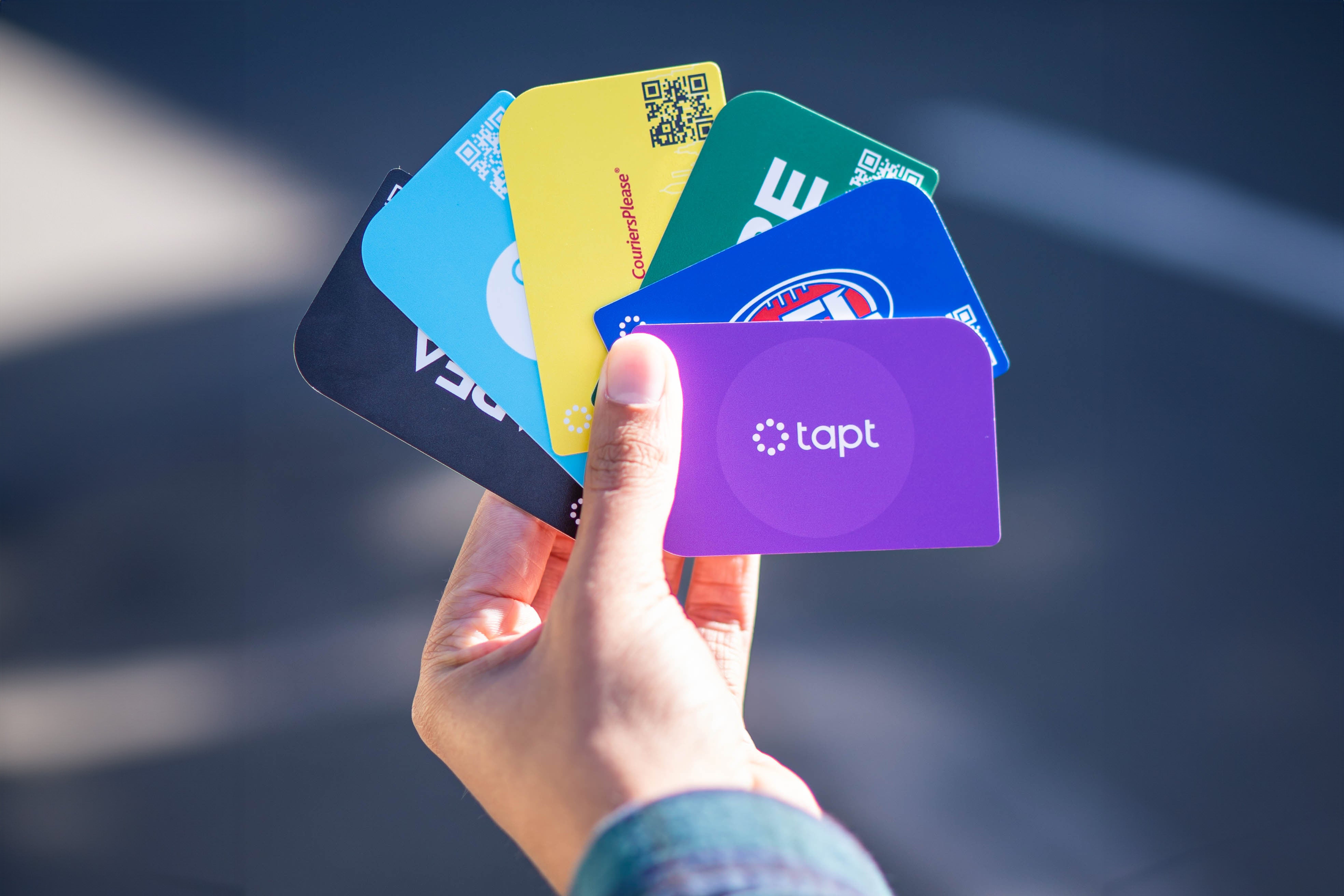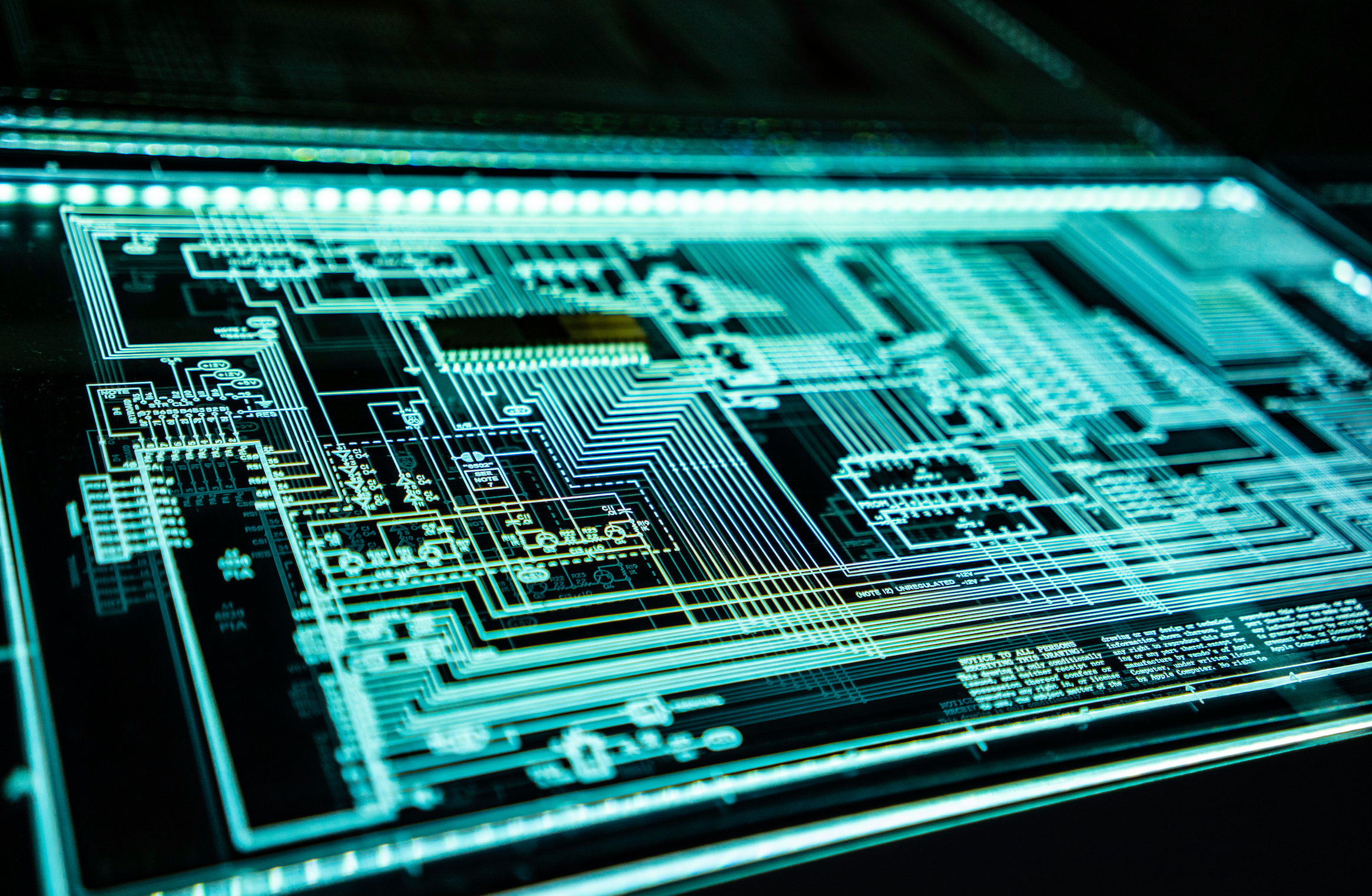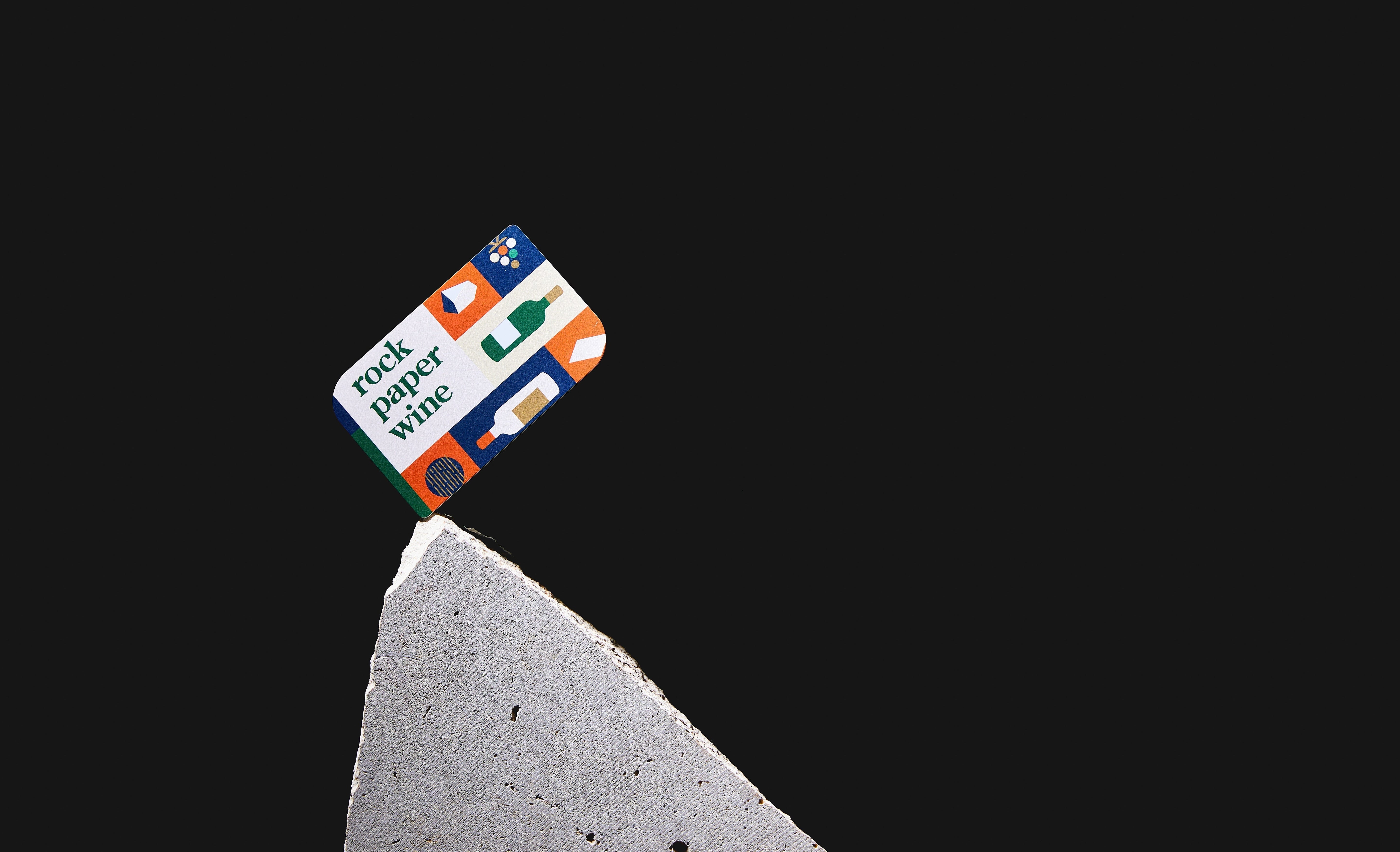In a world where everything seems to be zipping along at the speed of light, the way we mingle and swap our professional details has also evolved, leaving behind the traditional paper business cards. As the culture of no-touch interactions are taking over, digital business cards have become very popular. The two popular technologies for touch-free information swapping are QR codes and NFC cards. Let's dive in and unpack why NFC business cards are making a splash in the digital business card world and how they are superior to QR code.
What is NFC?
So, what exactly is NFC? Near Field Communication, commonly known as NFC, is a short-range communication that happens within a 10 cm circle. Operating at a frequency of 13.56 MHz, the information speeds can range from 106 kbit/s to 424 kbit/s, depending on how much the devices have to share.
Just like in any conversation, someone has to start - and that's the initiator in NFC. This initiator not only starts the communication but also generates a welcoming environment, an RF field, that powers up the passive target, making it easy for simple devices like tags, stickers, key fobs, or cards to join the conversation without the need for an extra power source like batteries.
NFC is a specialised part of the broader high-frequency (HF) Radio Frequency Identification (RFID) family, both communicating at the same frequency but in different ways. Imagine NFC as a more refined, secure version of RFID. Where RFID is like an announcement over a loudspeaker for tracking or categorisation purposes, NFC is more of a secure, two-way dialogue allowing complex interactions and exchange of information.
Moreover, NFC comes with an inbuilt security system - encryption standards, making the conversation secure and trustworthy. This characteristic is why you'll often find NFC being used in situations where security is paramount, like making contactless payments or unlocking secure devices. It's professional, yet also maintains that human touch, offering a more connected and convenient future.
The best part? NFC chips in our smartphones, tablets, and wearables can both send and receive data, making it super simple
Applications of Near Field Communication
Now, let's discuss the innovative features of Near Field Communication (NFC). Have you experienced contactless payments? Thanks to NFC, your phone can now act as a wallet. A simple tap on a payment terminal and the transaction is complete, eliminating the need for physical cards.
NFC's capabilities extend beyond payments. It has revolutionised the way we engage with our surroundings. For instance, imagine tapping your phone on an NFC tag in a poster, and instantaneously accessing more information about a product or event. It's an impressive advancement. Additionally, it has streamlined public transportation, facilitating easy fare gate access and quick travel card top-ups.
NFC has simplified device pairing and data sharing as well. You no longer have to grapple with Bluetooth connections; bringing two NFC-enabled devices close together does the trick. Sharing photos, contacts, and files has become seamless.
NFC is increasingly used in healthcare. Medical devices such as blood glucose monitors can now interact with your smartphone, allowing for better health tracking. NFC-enabled wristbands storing critical medical data expedite life-saving efforts in emergencies.
And it's transforming our homes into smart homes. With NFC technology, home appliances, lighting, and security systems can be controlled with just a simple tap on your phone or a specific NFC controller.
Moreover, the retail industry is undergoing a transformation with NFC. Tags on products offer customers access to detailed information, enabling informed purchasing decisions. Retailers also benefit with real-time inventory management and efficient stock replenishment.
NFC Digital Business Cards
NFC business cards are an innovative leap forward in professional networking. These cards, operating through Near Field Communication, transfer contact details and professional information with a simple tap.
Traditional Paper Business cards
Physical business cards are tangible representations of individuals and companies, holding all the important contact details and branding info. They were the key to communication and networking at meetings and conferences, connecting professionals.
But physical business cards had their drawbacks. Printing and sharing them could be pricey, especially if you had to update them often due to personnel changes or new contact info. And then there's the whole environmental concern with all that paper waste.
The Rise of NFC Digital Business Cards
NFC business cards are the progressive and smart alternative to old-school paper cards. These digital cards help in creating dynamic, interactive, and eco-friendly representations of professionals and businesses.
And the best part? No more awkward card exchanges. A simple tap or scan, and your contact details are transferred to someone's smartphone.
The Advantages of NFC Business Cards
Let's explore the numerous benefits that these digital cards offer.
- NFC Business Cards provide cost-effectiveness by eliminating traditional printing expenses, thus helping with budget savings.
- Customization is another advantage of digital business cards. They allow for personalized selection of styles that resonate with your professional identity, making a powerful statement about your brand.
- Digital cards come with analytics, enabling you to monitor who is viewing and sharing your card, serving as an invaluable tool for strategic networking.
- The shareability of digital cards adds to their convenience. They can be easily shared with a single tap on mobile devices.
- For businesses, digital business cards bring a paradigm shift. Their integration with CRM systems ensures efficient data management, reducing the potential for lost leads.
What are QR Codes?
QR codes, short for Quick Response codes, are basically two-dimensional barcodes with added functionality. They can store a lot of information, like contact details, website links, or plain old text. All you need is your smartphone's camera or a QR code reader app to decode the data in a flash.
Which is better - QR codes or NFC business cards?
Both of them do a fantastic job when it comes to sharing business information, but the way they operate is pretty different.
You scan the QR code with your phone's camera, and they give you information. But there are a couple of pitfalls. Sometimes, if the lighting's not great or the QR code gets a little smudged, your phone might not be able to scan it. Also, you'll need an app or a camera that knows how to read these codes. Not all devices have that right out of the box.
NFC Cards - Advantages Over QR Code
User Experience: NFC cards offer a more seamless and intuitive user experience compared to QR codes. No need to open an app and scan a code. The user just taps or brings their device near the card, and the information is instantly shared.
Versatility: NFC Business Cards can store a broad array of information types and can even perform actions, such as opening a website, saving a contact, or even launching a map to a specific location. While QR codes can also perform some of these functions, NFC cards do it in a much more streamlined manner.
Security: NFC digital cards have built-in capabilities for encryption and secure data transfer, which makes them more secure than QR codes.
Interactivity: With NFC Business Cards, it's possible to update the information on the card remotely, which isn't possible with printed QR codes. This means your card can stay up-to-date even after it's been handed out.
Professionalism: In the business context, handing over a sleek NFC business card can leave a much more professional impression than directing someone to scan a QR code.
Speed and Efficiency: NFC transactions are fast, with a typical transaction taking less than one-tenth of a second, providing an immediate transfer of data, which is not always the case with QR code scanning.
Future of NFC Technology
The exciting part is that NFC's journey is far from over. It is poised to revolutionise additional sectors. Consider keyless entry and personalised in-car settings in the automotive industry, or secure identification and contactless voting in public services. NFC is progressing towards making these innovations a reality.




8 creative tips which you can add to the back of your business card
Seamlessly Add Your Tapt Card to Your Digital Wallet